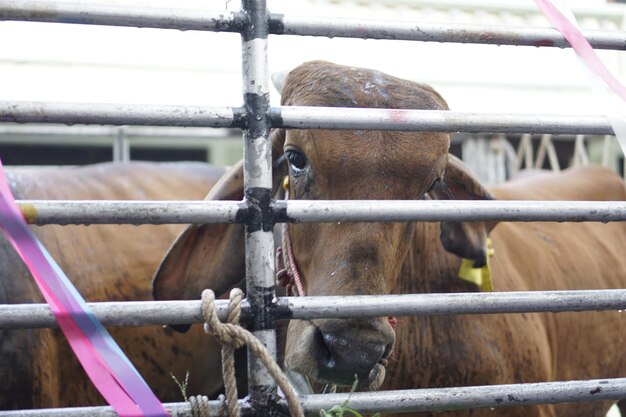Understanding Emergency Assistance for Farmers: Livestock, Bees, and Fish
In the unpredictable world of agriculture, where the whims of nature can change fortunes overnight, a lifeline exists for those tending to livestock, honeybees, and farm-raised fish. The Emergency Assistance for Livestock, Honeybees, and Farm-Raised Fish Program (ELAP) is designed to offer respite to farmers affected by severe and unexpected natural disasters. But how does this program function, and who can benefit from it?
What is ELAP?
ELAP was created by the United States Department of Agriculture (USDA) to provide financial relief to farmers and ranchers who have suffered financial losses resulting from adverse weather or disease outbreaks. This federal aid covers a range of scenarios, including livestock death, additional feed costs caused by weather events, as well as honeybee colony losses and fish mortality. By offering critical financial assistance, the USDA aims to help these crucial sectors recover swiftly and continue their operations with minimal disruption.
Who is Eligible?
Farmers, ranchers, and producers with livestock, bees, or fish operations who experience eligible losses due to natural disasters such as drought, flooding, wildfires, and extreme weather conditions can apply for ELAP. However, there are specific requirements and documentation needed. The key is proving that the losses were a direct result of these events.
Key Eligibility Criteria:
- Livestock owners must be able to show direct losses or increased production costs due to a qualifying event.
- Beekeepers must document colony losses, honey production loss, or hive damage.
- Fish farmers need to account for fish death losses or increased feed costs under qualifying conditions.
How to Apply
To tap into these benefits, applicants need to file a notice of loss to their local Farm Service Agency (FSA) office within 30 calendar days of when the loss is apparent. Complete and accurate records of losses are essential to streamline the approval process.
Farmers must ensure they keep track of:
- The number and type of animals or hives lost.
- Receipts for the additional feed required.
- Documentation of normal vs. affected production levels.
Navigate Financial Challenges
For many, ELAP is more than just compensation; it can be a vital stopgap that ensures the continuity of business when unforeseen circumstances hit. That said, disaster recovery often necessitates exploring additional financial tools and government aid programs.
Exploring Broader Financial Support
Agricultural producers aren't limited to just ELAP. A range of financial assistance programs exist to provide relief and support.
- Farm Loans: Designed to offer credit to new and established farmers for recovery and growth.
- Operating Loan Program: Assists in meeting daily operational expenses.
- Disaster Loan Assistance: Offers low-interest loans to repair or replace real estate, livestock, equipment, and property.
Expanding Beyond Agriculture
For producers seeking to deepen their understanding or diversify, educational grants provide access to further training and skill development.
- Rural Education Grants: Support research and outreach in rural communities.
- Agricultural Education Programs: Provide platforms for learning cutting-edge techniques and sustainable practices.
Credit Solutions for Agri-Entrepreneurs
Managing cash flow can be a daunting task. Credit lines and credit card options tailored for agricultural producers offer flexibility to handle expenses or invest in innovations.
- Farm Credit Cards: Provide quick access to credit for immediate needs and emergencies, with the added benefit of reward schemes.
- Lines of Credit: Short-term solutions to bridge gaps and maintain liquidity.
Quick Reference List of Financial Assistance and Resources 🌾
- 💰 ELAP: Aid for losses in livestock, honeybees, and fish due to natural disasters.
- 🌾 Farm Loans: Financial products for capital and operational use.
- 💼 Disaster Loan Assistance: Low-interest loans for rebuilding and recovery.
- 📚 Educational Grants: Support for learning and skill enhancement in agriculture.
- 🏦 Farm Credit Cards and Lines of Credit: Financial flexibility for ongoing expenses and new investments.
The path to recovery and sustainability doesn't have to be undertaken alone. With these resources at their disposal, farmers can steer through adversities confidently and continue contributing to our vital food chains.

- A Comprehensive Guide To The Senior Companion Program
- Comprehensive Guide To The Biotechnology Risk Assessment Research Grants Program
- Agriculture Innovation Center Demonstration Program: Your Comprehensive Guide
- The Agriculture And Food Research Initiative - Food Safety Challenge Area: A Guide For Consumers
- Agriculture And Food Research Initiative - Childhood Obesity Prevention: A Comprehensive Guide
- Understanding Federal Transit Grants For Rural Areas
- Understanding The Homeless Veterans' Reintegration Program
- Unleashing Opportunities With The YouthBuild Program
- Understanding Native American Housing Block Grants
- Unleashing The Residential Rehabilitation Assistance Program: The Definitive Guide